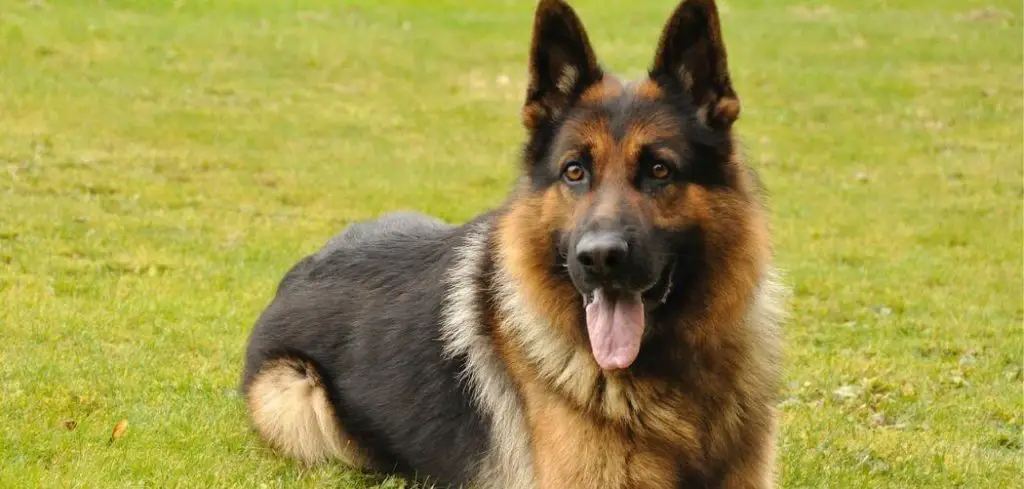Panting and shaking after exercise can be alarming, especially if your dog usually recovers quickly from activity.
While sometimes harmless, these symptoms can signal a more serious problem that requires veterinary attention.
We outline the common causes of a dog panting and shaking after exercise, what you can do at home, and when to seek veterinary help.
Table of Contents
Dog Panting and Shaking After Exercise — Why It Happens
A dog panting and shaking after exercise can result from overexertion, overheating, anxiety, or underlying health conditions. Muscle fatigue, dehydration, pain, or low blood sugar are also possible triggers.
These symptoms occur when your dog’s body struggles to recover from the physical demand placed on it.
While mild symptoms may resolve with rest, persistent or severe cases should never be ignored.

Common Causes of Dog Panting and Shaking After Exercise
Overexertion
Dogs not conditioned for vigorous activity can quickly become overworked. Muscles tire, the heart pumps harder, and body temperature rises.
Panting increases to help cool down, while shaking may follow from muscle fatigue or adrenaline release.
Older dogs, puppies, or those with low fitness levels are particularly prone. Without adequate rest, overexertion can lead to dehydration or injury.
Related: Dog panting excessively (Causes and What To Do)
Heat Exhaustion
Exercise in warm conditions can cause the body to overheat. Dogs rely on panting to regulate temperature, but when heat builds faster than it can be released, the result is tremors, weakness, and in severe cases, heatstroke.
Thick-coated breeds, brachycephalic (short-nosed) dogs, and overweight pets are especially at risk.
Pain or Injury
A muscle strain, joint sprain, or paw pad damage during exercise can cause panting from discomfort and stress.
Shaking often accompanies pain as the body reacts to the injury. Limping, reluctance to move, or persistent licking of an area are warning signs.
Even small injuries can escalate if not treated promptly.
Anxiety or Overstimulation
Some dogs experience anxiety or sensory overload during exercise, particularly in noisy, crowded, or unfamiliar settings.
Adrenaline spikes, causing rapid breathing and trembling that can last long after activity ends. Dogs may also exhibit pacing, whining, or clinginess.
Low Blood Sugar
Intense exercise can lower blood sugar levels, especially in small breeds, puppies, or dogs with metabolic conditions.
Hypoglycemia causes trembling, weakness, and heavy panting. If untreated, it may progress to confusion, seizures, or collapse.
Underlying Medical Conditions
Heart disease, respiratory issues, or hormonal imbalances can make even mild exercise taxing.
If panting and shaking occur after light activity, it may indicate the body’s inability to meet oxygen demands or regulate temperature. Veterinary evaluation is critical for early diagnosis.
What to Do If Your Dog Is Panting and Shaking After Exercise
Bring your dog to a cool, shaded, or well-ventilated space. Offer fresh water and encourage rest. Check for injuries, gently feeling legs, paws, and joints.
Speak softly to reduce anxiety. Refrain from resuming activity until full recovery. If symptoms do not improve within an hour or seem severe, seek veterinary advice.
When to Call or Visit Your Vet
Get immediate veterinary attention if your dog collapses, has difficulty breathing, displays pale or blue gums, vomits, or shows signs of heatstroke such as confusion or excessive drooling.
Contact your vet promptly if symptoms occur after minimal activity, persist after rest, or happen repeatedly. Quick action can prevent dangerous outcomes.
Read more: Dog Panting and Shaking After Vaccine (Here’s why)
Key Takeaway
Panting and shaking after exercise can be part of normal recovery or a red flag for health problems.
Knowing potential causes, acting quickly when symptoms arise, and involving your vet when needed will help keep your dog safe and healthy.
